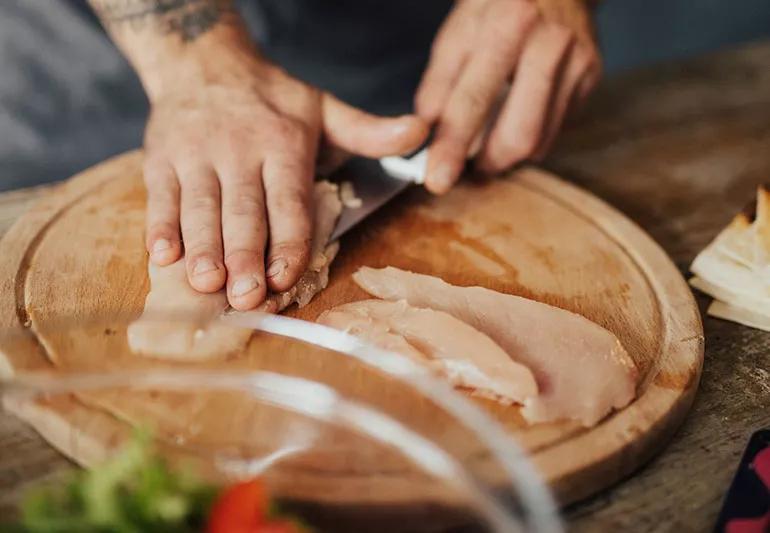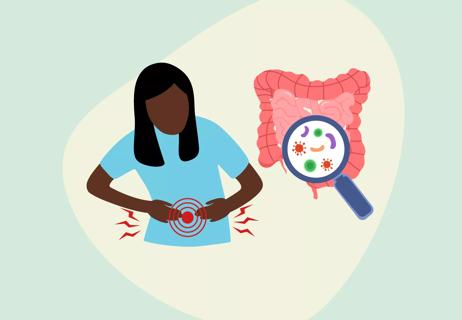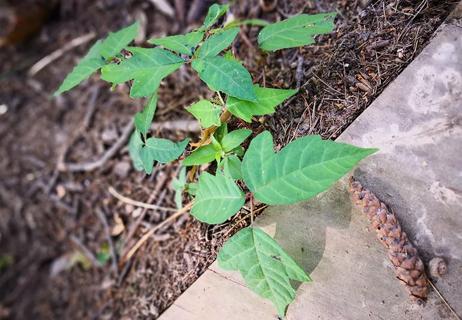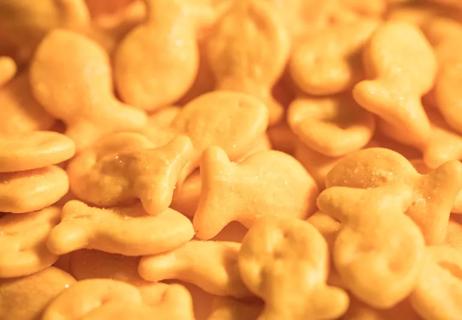Cleanliness and food preparation precautions are the best defense against infection

Millions of meals served around the world every year offer an unwanted extra — Salmonella, a nasty bacteria that can lead to an unpleasant (and sometimes even deadly) form of food poisoning.
Advertisement
Cleveland Clinic is a non-profit academic medical center. Advertising on our site helps support our mission. We do not endorse non-Cleveland Clinic products or services. Policy
The good news? Avoiding the illness and resulting days of gastric distress often comes down to taking just a few simple precautions.
Infectious disease specialist Frank Esper, MD, has tips to add a dash of safety to your diet.
Salmonella is a type of bacteria that can live and thrive in the digestive tract of people and animals. It exits your body by … well, hitching a ride in poop. (That kind of makes it easier to understand why it’s so upsetting to your tummy, huh?)
Food is the main source of Salmonella infections. Although Salmonella is the bacteria, an infection is often just called salmonella. You can pick it up by:
Eating food contaminated with Salmonella may give you stomach cramps, severe diarrhea and vomiting that lasts four to seven days, says Dr. Esper. An estimated 26,500 people a year are hospitalized due to Salmonella.
Advertisement
In severe cases, Salmonella can get into your bloodstream, damage organs and cause death.
Your risk of Salmonella poisoning is minimal if you take the necessary precautions to ensure your food is properly prepared and stored.
The U.S. Centers for Disease Control and Prevention (CDC) recommends these precautions, broken into four steps.
Also, people who have salmonella shouldn’t prepare food or pour water for others until their symptoms resolve and they have a negative follow-up test.
It’s important to remember that contamination can happen at any stage of food production, from farm to store. And you can’t exactly tell when something’s contaminated because Salmonella doesn’t affect the taste, smell or appearance of food.
“That’s why it’s important to always practice safe food preparation practices,” stresses Dr. Esper.
While food is the most common cause of Salmonella infections, the bacteria can also be transferred when you touch an animal. (Basically, think of how animals enjoy rolling on the ground … and then think of what they might be rolling in.)
Turtles, snakes, lizards and baby birds are also more likely to carry Salmonella. In early 2022, the CDC reported a Salmonella outbreak linked to pet bearded dragons.
To stay safe, always wash your hands after touching pets or other animals. The same advice applies when you handle toys or bedding used by animals. It’s best not to smooch animals, either.
If two or more people come down with a stomach-churning case of salmonella that’s linked to the same contaminated food, drink or animals, it’s classified as an outbreak and investigated by the CDC.
Advertisement
In recent years, outbreaks have been connected to food products ranging from salami sticks to onions to ground turkey.
Zoonotic outbreaks have been tied to backyard poultry, pet hedgehogs and wild songbirds.
Be on the lookout for Salmonella outbreak announcements, which are typically widely reported, to ensure you don’t have contaminated products. Many salmonella outbreaks lead to food recalls.
It’s not always obvious when someone has salmonella poisoning, as common symptoms — vomiting, diarrhea, fever and chills — closely resemble those of stomach bugs.
The main difference? “People with salmonella tend to just be sicker,” says Dr. Esper.
Your poop may offer a more definitive clue if you take a peek in the toilet. Blood and mucous may be visible in your stool if you have salmonella. The stomach flu, meanwhile, often leads to more water diarrhea.
In most cases, your body doesn’t actually need antibiotics to fight Salmonella, Dr. Esper says.
But if you’re younger than 5 (especially babies under 3 months of age), older than 65 or have a weakened immune system, salmonella may put you at higher risk for complications. Dehydration also can become an issue if you’re unable to keep down any fluids.
Advertisement
“We certainly recommend that everyone who thinks they might have salmonella poisoning at least talk to a medical professional and let us know what’s going on, even if they don’t need to be seen,” Dr. Esper advises.
Most likely, however, you’ll just need some good old rest and plenty of hydration. A review of tips to avoid Salmonella might not be a bad idea, too.
Advertisement
Learn more about our editorial process.
Advertisement

Rinsing raw chicken raises the risk of spreading harmful bacteria and causing foodborne illness

Keep cooked rice and pasta in your fridge — not on your counter — to help prevent this sneaky food poisoning

Mushroom poisoning is real — and it can cause liver failure

Food poisoning typically passes within 12 to 48 hours, with symptoms including diarrhea, nausea, stomach pain and vomiting

Learn about the symptoms and find out how to protect yourself and your family

Children should be screened for lead poisoning starting at ages 1 and 2

A dermatologist’s advice for finding some relief for that itchy rash

How to protect yourself from food poisoning

If you’re feeling short of breath, sleep can be tough — propping yourself up or sleeping on your side may help

If you fear the unknown or find yourself needing reassurance often, you may identify with this attachment style

If you’re looking to boost your gut health, it’s better to get fiber from whole foods